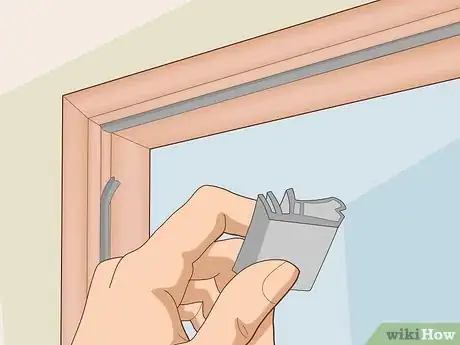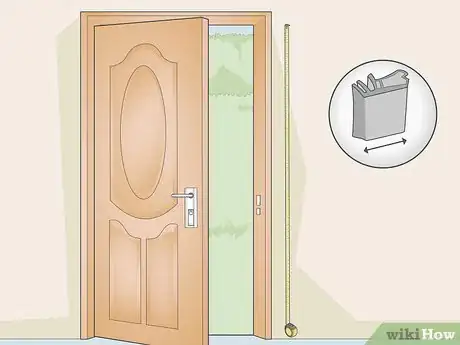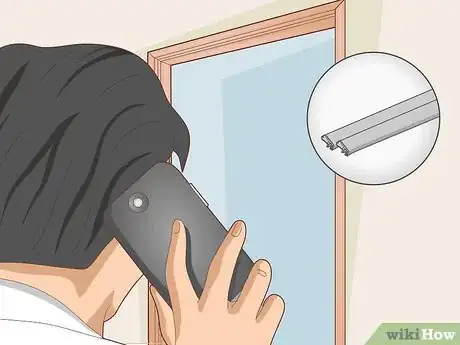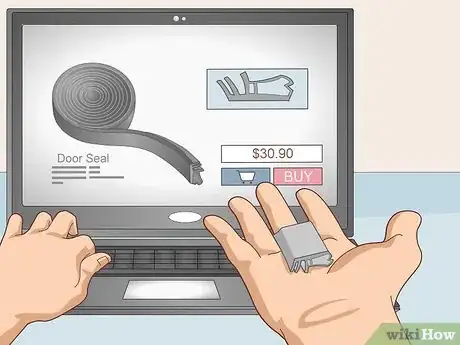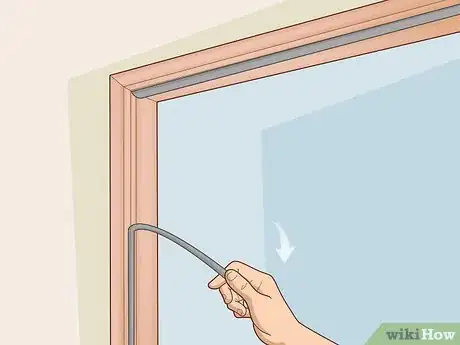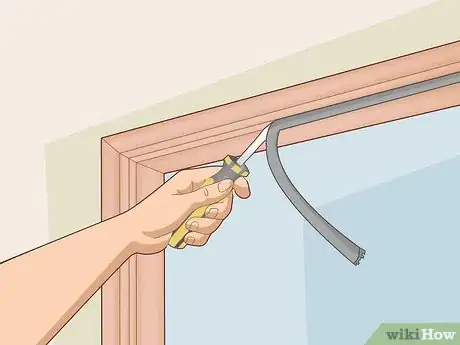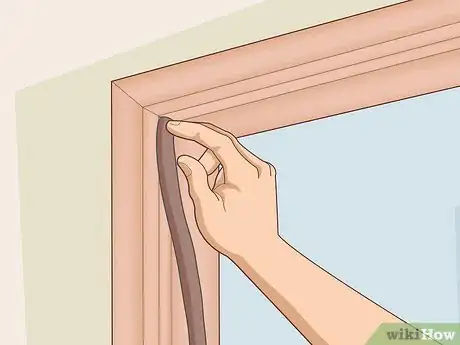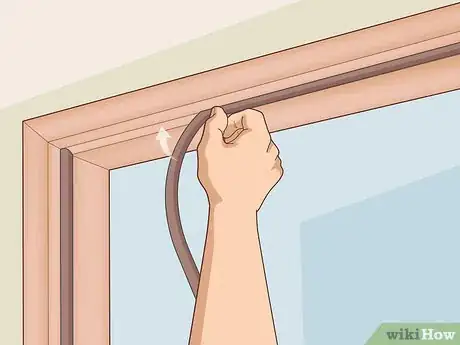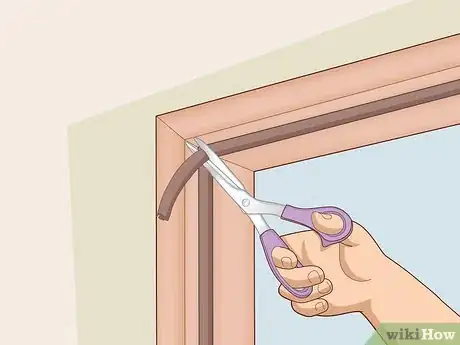This article was co-authored by wikiHow staff writer, Eric McClure. Eric McClure is an editing fellow at wikiHow where he has been editing, researching, and creating content since 2019. A former educator and poet, his work has appeared in Carcinogenic Poetry, Shot Glass Journal, Prairie Margins, and The Rusty Nail. His digital chapbook, The Internet, was also published in TL;DR Magazine. He was the winner of the Paul Carroll award for outstanding achievement in creative writing in 2014, and he was a featured reader at the Poetry Foundation’s Open Door Reading Series in 2015. Eric holds a BA in English from the University of Illinois at Chicago, and an MEd in secondary education from DePaul University.
There are 7 references cited in this article, which can be found at the bottom of the page.
This article has been viewed 31,123 times.
Learn more...
UPVC stands for unplasticized polyvinyl chloride, and is a plastic material used to make exterior doors, windows, and frames. The surrounding frames of most exterior uPVC doors utilize a rubber seal, also known as a gasket, to keep the outside air out of your home. Since this rubber seal is always 1 piece, it is extremely difficult to functionally fix a broken seal. In addition, this piece only costs $4-10 to replace, so it always makes more sense to simply replace a rubber seal on a uPVC door entirely. You may need to replace your uPVC door’s rubber seal if you notice your door sticks a little when you close or open it, or if your door becomes drafty during cold or windy weather.
Steps
Ordering a Replacement Seal
-
1Remove a small piece of the seal and inspect the shape. The only difference between most door seals is the shape of the insert that slides into the frame of your door. Unfortunately, this piece is hidden in the slot it is fitted into. To remove a piece, pull out a small 1–2 in (2.5–5.1 cm) piece of the rubber seal by pulling it out of the slot. Cut the piece using a pair of scissors. Inspect the shape of the fitting to determine what you need to look for.[1]
- Don’t remove the entire seal. Your home will be exposed to the air outside if you do. Removing a small section isn’t a big deal unless it’s freezing outside, though.
- On some seals, this piece is T-shaped. On others, it may be angled, round, or have 2 parallel connecting slots. This shape must match your door frame’s opening for a proper seal.
- Some door seals are flat and use adhesive to grip the frame. If the rubber seal is glued to the door, use a utility knife to peel a portion out.
-
2Measure your door if it’s irregularly sized and check the thickness of the seal. Rubber door seals are only found on exterior doors, and most exterior doors are 36 by 80 inches (91 by 203 cm). This means that you only need to measure your door to find a replacement seal if your door is custom-made or has an irregular shape. To measure your door, get a measuring tape and measure the height and width of your door. Write these numbers down, add them together, and multiply the sum by 2 to determine the length of the seal you need. Measure the thickness of the seal so you know how big your replacement needs to be.[2]
- For example, if your door is 90 inches (230 cm) tall and 40 inches (100 cm) wide, you need a seal that is at least 260 inches (660 cm) in length.
- You can usually cut rubber seals with scissors, so you can simply buy a long length of rubber seal and cut it to size later if you don’t want to mess around with a measuring tape.
- You don’t need to worry about the thickness of the door itself.
Advertisement -
3Contact your door’s manufacturer to get a replacement seal. Since the rubber seals used for uPVC doors come in a variety of styles, the easiest way to get a replacement seal is to contact your door’s manufacturer directly. Look up the number for your door’s manufacturer online and call them. Explain that you need a replacement rubber seal or gasket and provide the dimensions of your door and the shape of your seal. Pay for the piece over the phone or follow the manufacturer’s instructions to buy a replacement from their website.
- You may need to pay for shipping, but the rubber seal itself should only cost $4-10. If your door is custom-made or uniquely shaped, it may cost a little more.
- Most hardware and home supply stores do not carry replacement rubber seals, so you’ll need to buy it online.
Tip: Unless there’s a sticker somewhere on your door, the only real way to know who manufactured your door is to ask the contractors that installed it.
-
4Search for a matching seal online if you don’t know the door’s manufacturer. Search “rubber seal gasket uPVC door” online and compare your seal’s fitting type to the images online. Once you find a seal that matches your original seal, purchase a replacement online. When looking at a potential replacement, make sure that it’s long enough to fit around your door and thick enough to slide into the slot.[3]
- While it’s easier to replace your door seal with a seal made by the same company that manufactured your door, a seal made by a different company will fit so long as the slot on the frame matches the shape of the seal.
- There are only 5-10 different seal fittings, so you shouldn’t have too much trouble finding a replacement. Even if you do make a mistake, you’ll only lose a few dollars if you get it wrong.
Removing the Old Seal
-
1Open your door and put a door stopper underneath. You don’t need to remove your door to replace the rubber seal on the frame. You do, however, need to keep the door open while you work. Open the door as wide as it will go and slide a door stopper under the bottom of the door to keep it from moving.
- If you don’t have a door stopper, use brick or some other heavy item.
-
2Grab the rubber seal and pull it out gently by hand. Most rubber seals can be removed by hand. To do this, pinch a section of the rubber seal between your fingers and pull it gently out of the frame. If the portion you’re pulling won’t budge, continue working your way around the frame until you find a weak point where the seal comes out. Once you peel a small portion out, slowly pull the seal out of the rest of the frame.[4]
Variation: If it looks like the seal is glued, slide a knife blade in between a portion of the seal and the frame. Once you loosen the seal, you should be able to pull it off of the frame. These adhesive seals usually use a weak glue to keep the seal from sliding around.
-
3Use a flathead screwdriver or utility knife to pry it out if it won’t budge. If the seal simply won’t move when you pull on it, grab a flathead screwdriver or utility knife. Gently press the knife or screwdriver into the seal at 45-degree angle where it slides into the frame. Once the knife or screwdriver is in place, pry it out to pop it out of the frame. Once a small portion is removed, you should be able to pull the rest of it out by hand.[5]
- If you can’t pull the seal out by hand, you may need to repeat this process as you work in sections around the door frame.
Installing the New Seal
-
1Push part of the new seal into the slot on the frame of your door. Start in the middle of the door on the side where your door closes to give yourself a comfortable starting point with plenty of room. Take the end of your new seal and hold it over the slot in the frame. Use your thumb to gently press the new seal into the corresponding slot. Once the seal in place, try softly pulling it out. If it doesn’t move, it is successfully inside of the frame.[6]
- If you have adhesive-backed seal, peel 3–4 inches (7.6–10.2 cm) of the cover off the back, press it into a corner, and do not remove the rest of the adhesive backing.
-
2Apply light pressure to push the seal into the slot around the frame. Use one of your hands to guide the seal and keep it over the slot it fits into. Use your other hand to push the seal into the frame of the door. Continue pushing the seal into the frame until you’ve worked your way all around the door.[7]
- If you have an adhesive seal, continue removing the plastic from the back as you press the seal into the frame.
Tip: You can use a flathead screwdriver to push the seal in if you struggle working the rubber into the sharp angles at the corners.
-
3Cut any excess stripping off at the end if necessary. If you purchased a longer piece of rubber or you stretched the seal out a little as you installed it, you may have an extra length of rubber seal sticking out when you’re done. Use a standard pair of scissors to cut the excess length off and force the unfinished portion into the frame.[8]
- For an adhesive seal, this is easier to do without removing the cover on the adhesive back.
- If your seal should have fit your door perfectly but you still ended up with a piece overlapping at the end, don’t worry about it. These rubber seals are pliable and you may have stretched it out a little while you were working. It isn’t bad for your door or anything.
- If you end up short and have a 0.25–1 in (0.64–2.54 cm) gap in the seal, it really isn’t a big deal. You can use silicone caulk to fill it in if you’d like, but you likely won’t notice a huge difference. Larger gaps may result in heavy drafts, though.
Things You’ll Need
- Replacement rubber seal
- Measuring tape (optional)
- Scissors (optional)
- Utility knife (optional)
- Flathead screwdriver (optional)
References
- ↑ https://youtu.be/KwnjfEpZ3bM?t=35
- ↑ https://www.bobvila.com/articles/standard-size-for-doors/
- ↑ https://youtu.be/prt2c1c8WXw?t=28
- ↑ https://youtu.be/prt2c1c8WXw?t=37
- ↑ https://youtu.be/prt2c1c8WXw?t=37
- ↑ https://youtu.be/udzVPbS_rW4?t=64
- ↑ https://youtu.be/udzVPbS_rW4?t=81
- ↑ https://youtu.be/prt2c1c8WXw?t=45
